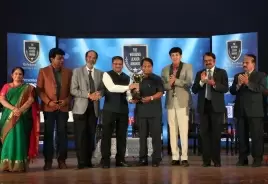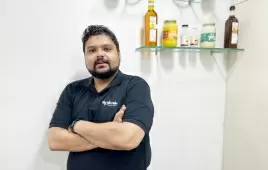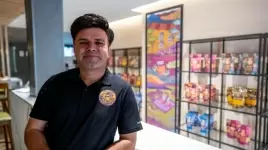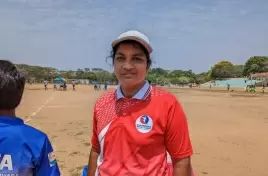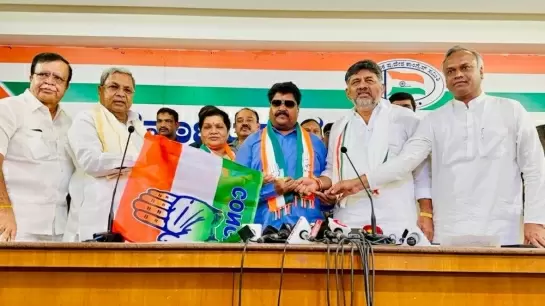Indian needs more gender representation in its police force
15-March-2014
Vol 5 | Issue 11
Women living in different parts of India have high expectations from their counterparts working in the police force, despite the general perception that policing is an extremely masculine profession.
A first-of-its-kind study titled, ‘Acceptance of Women Police in Society’, was unveiled by Aruna M. Bahuguna, the first woman director of the National Police Academy (NPA), Hyderabad, during the Sixth National Conference of Women in Police, held in late February in Guwahati, Assam.
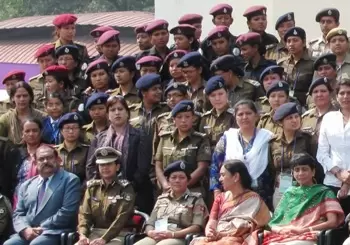 |
|
According to the study, policewomen are comparatively less corrupt, less prone to human rights violations (Photos: Ratna Bharali TalukdarWFS)
|
Bahuguna has overseen this study, which offers many insights into how the Indian public perceives the issue of women’s deployment in the police force.
At the conference, which was organised by the Delhi-based Bureau of Police Research and Development, around 240 policewomen serving in different capacities ranging from the constable to the director general of police took part in the discussions.
It may come as a surprise many, but the ‘Acceptance of Women Police in Society’ survey has revealed that 87.2 per cent of women would like equal gender representation within the police force. In the case of male respondents, 68.2 per cent have preferred a more gender equal police force.
An overwhelming 78.4 per cent of respondents in the rural and urban categories also wanted equal representation of females. The irony, of course, is that despite such attitudes the current strength of women in the Indian police is only a negligible three per cent.
The survey, conducted in 322 locations covering seven states – Andhra Pradesh, Assam, Jammu and Kashmir, Kerala, Madhya Pradesh, New Delhi, and Uttar Pradesh – and another 44 locations where the Central Industrial Security Force (CISF) was deployed, includes the voices of both male (50.6 per cent) and female (43 per cent) respondents. Urbanites made up 57 per cent of their number, while 34.3 per cent were located in rural areas.
According to the study, 87.20 per cent women would be happy to have their female relatives join the police, compared to 69.50 per cent of male respondents.
However, such a significant difference was not seen when it came to urban and rural areas, where 90.4 per cent of both categories welcomed the idea of seeing their relatives as policewomen.
Those who did not support their female relatives joining the police were of the opinion that in a patriarchal society the work of the police was entirely for men, and was completely unsuitable in terms of women’s personal lives.
They also expressed the anxiety that the profession involved physical risks. In this context, only 38.7 per cent of respondents felt that women should be deployed in Maoist dominant areas for operations, while 48.69 per cent felt that women should not be part of such deployment.
Incidentally, during the survey, the NPA received feedback that wherever women were deployed as part of the Central Reserve Police Force (CRPF) operating in the insurgency hit areas, the number of incidents of human rights violations was relatively low.
That there is no stigma attached to women working in the police force has emerged very clearly. Some 75.44 per cent of male respondents stated they had no objection to marrying policewomen.
But when it came to men reposing confidence in dealing with women police, only 46 per cent males responded positively, while in contrast the figure for female respondents was 75 per cent. The reasons they gave for reposing such confidence included the fact that policewomen are known to listen to the public politely and there is no fear of getting harassed by them.
Significantly, according to Bahuguna, the survey indicates that women police are comparatively less corrupt.
The survey findings have also revealed that 80.40 per cent females and 78 per cent males believed that women in uniform were “well behaved, well mannered and polite”. In the case of rural and urban communities, the figures were 81.40 and 77 per cent, respectively.
A majority of respondents talked about the need for greater media coverage of the issue, with 89.2 per cent respondents stating that the positive projection of women in the police would help in increasing their strength in the force.
Bahuguna concurs, “Media projection is very important. When women in police do something positive in the field and this has been properly projected in the media, it serves as a huge motivation for more women to come forward and join the force.”
The discussions at the national conference were rich and there were various sub-themes as well, including the need for professionalism, capacity building and attitudinal changes.
Professor Lakshmi Lingam, Deputy Director, Tata Institute of Social Sciences, Hyderabad, while addressing the session on ‘Gender Attitude and Police’, observed that the general perception of both the public and the police was that that policing was a masculine pursuit and that women who joined the police are expected to ‘undo gender’. Attitudes like this need to be overhauled, Lingam felt.
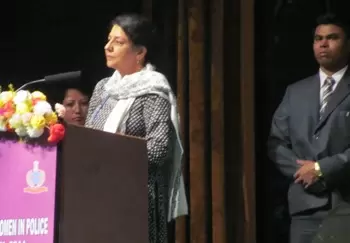 |
|
Kanwaljit Deol, Director General (Investigation) National Human Rights Commission, addressed the inaugural ceremony of the Sixth National Conference of Women in Police
|
Among the best practices that emerged at the conference was a case study of how the Haryana Police, adopting information technology, had developed a software called ‘I am Safe’, which helped to create a safer and more gender-sensitive city.
Haryana’s Assistant Commissioner of Police, Poonam Dalal, highlighted this in her presentation on how the software can be used by women to keep the police posted about their whereabouts in any part of the city and even across the country through the national police network.
According to the officer, this software is proving popular, not only in the towns and cities but also in remote parts of the state and is now part of the state government’s campaign to inform women citizens of their legal and constitutional right to be safe from all kinds of crime and violence.
These are all the different ways to reform an institution that has often let down the citizens of India, especially women. Reform is indeed the need of the hour, not just in the public space but within the police force.
In this context, the observations of the Governor of Assam, Janaki Ballav Patnaik, who inaugurated the conference, were particularly relevant.
After noting that in 2009, 77 per cent of police women from 35 different countries reported sexual harassment by their colleagues, the Governor went on to observe that the recruitment of police is far from encouraging in India. Said he, “While women have proved equal to men in police duties assigned to them, there is a lot of superstition and prejudice against women.”
These are problems that need to be addressed urgently. As the ‘Acceptance of Women Police in Society’ study has indicated, the police force in India is ripe for change. - Women's Feature Service


